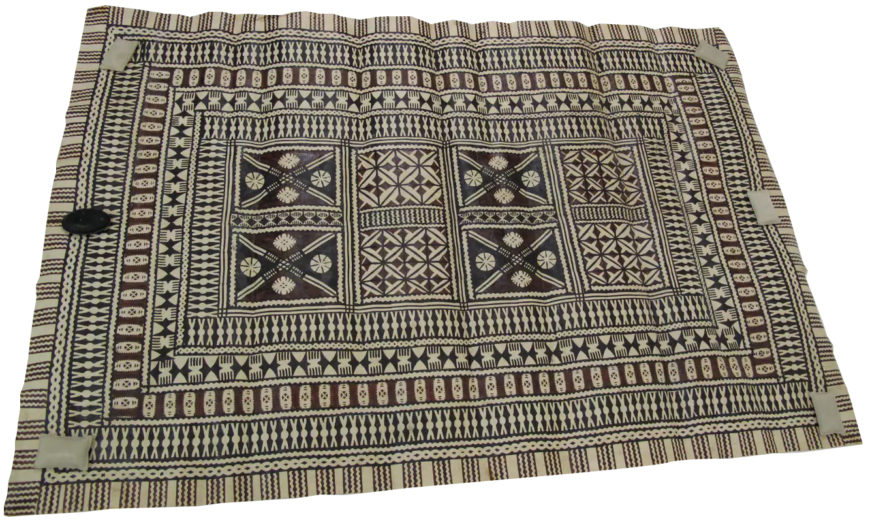
Presentation of Fijian mats and tapa cloths to Queen Elizabeth II during the 1953–54 royal tour, silver gelatin print, 16.5 x 22 cm (Alexander Turnbull Library, Wellington, New Zealand)
A procession for a royal visit
On December 17, 1953, a newly crowned Queen Elizabeth II and her husband Prince Philip, Duke of Edinburgh, arrived on the island of Fiji, then an English colony, and stayed for three days before continuing on their first tour of the Commonwealth in the Pacific Islands. The Commonwealth of Nations, today commonly known as the Commonwealth, but formerly the British Commonwealth, is an intergovernmental organization of 53 member states that were mostly territories of the former British Empire.
While the precise date of the photograph depicted above is unknown, there is still much that can be learned both about Fijian art and culture and the Queen’s historic visit. The first thing you might notice in the photograph is the procession of Fijian women making their way through a group of seated Fijian men and women.
Barkcloth
Several of the processing women are wearing skirts made of barkcloth painted with geometric patterns. Barkcloth, or masi, as it is referred to in Fiji, is made by stripping the inner bark of mulberry trees, soaking the bark, then beating it into strips of cloth that are glued together, often by a paste made of arrowroot. Bold and intricate geometric patterns in red, white, and black are often painted onto the masi. The practice of making masi continues in Fiji, where the cloth is often presented as gifts in important ceremonies such as weddings and funerals, or to commemorate significant events, such as a visit by the Queen of England. While in this photograph, the masi is only worn by the women and not carried, as far as can be ascertained in this picture; it is very likely that the women also presented the cloth to the Queen to celebrate the occasion of her visit.
Mats
What is definitely evident from the photograph are the rolls of woven mats that each woman in the procession carries. Like masi, Fijian mats served and continue to serve an important purpose in Fijian society as a type of ritual exchange and tribute. Made by women, Fijian mats are begun by stripping, boiling, drying, blackening, and then softening leaves from the Pandanus plant. The dried leaves are then woven into tight, often diagonal patterns that culminate in frayed or fringed edges.




